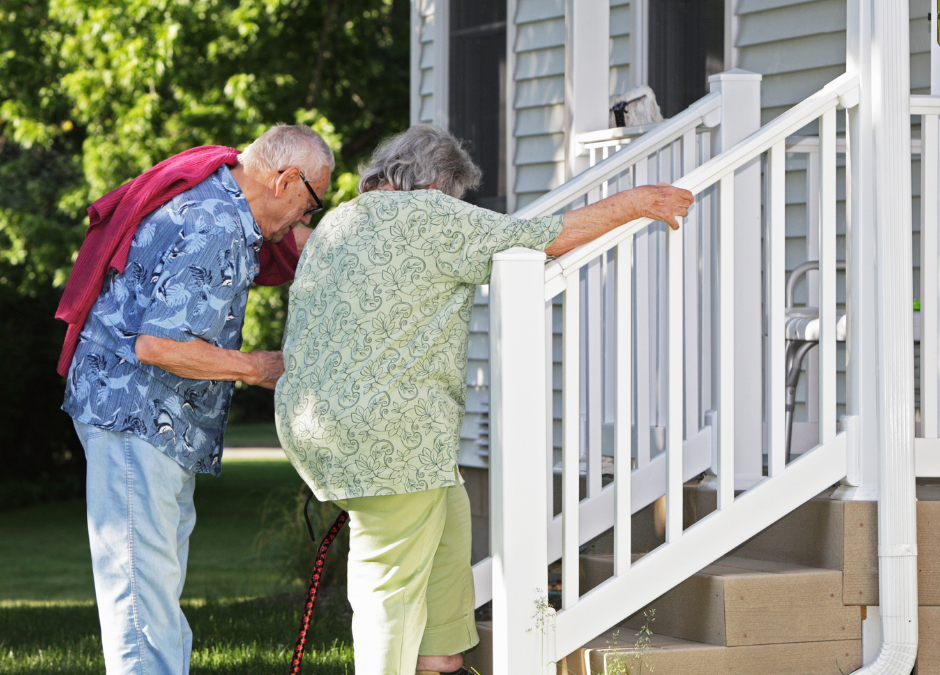Most of us were shocked to learn that 73-year-old Ivana Trump died after a tumble down the elegant and winding stairway in her home. The cause of death was ruled an accident. It turns out, falling down stairs is a common, dangerous, and potentially fatal accident.
Around one million Americans fall down stairs annually. Tragically, approximately 12,000 die each year from these falls in the United States.
Older adults suffer the most injuries from falls, although all people are at risk. Some of the most common causes of falls on stairs include:
1. slippery steps
2. poor lighting
3. unsafe handrails
4. clutter on the staircase
5. carrying an object or objects while descending steps
According to the Centers for Disease Control, each year 3 million older people are treated in emergency departments for injuries related to falls, and at least 300,000 seniors are hospitalized for hip fractures annually.
Some of the risk factors that affect balance and strength for seniors are:
1. Medications. Some can cause weakness or balance issues. If a senior is taking tranquilizers, sleep aids, sedatives, anti-depressants, or painkillers, or have vision problems, their balance can be unsteady or compromised.
2. Loss of muscle mass. As people age, they lose muscle.
3. Poor nutrition. Seniors’ sense of taste is often dulled, so many go for tasty but nutritionally poor foods
4. Disease or disorders. Parkinson’s, strokes, and arthritis are a few diseases that have a direct result in balance and strength
5. Poor eyesight and/or eye disease
6. Sedentary lifestyle. As people age, they slow down. Less physical activity causes weakness and a drop in muscle mass (If you don’t use it, you lose it)
It is imperative to implement fall-proof strategies for seniors to prevent falls, serious injury or fatalities.
To mitigate risk factors seniors can improve balance through exercise programs or physical therapy. Balance and strength training can prevent falls and keep seniors more actively engaged in a healthy lifestyle that promotes a mobile and energetic life which helps lower the risk of falls.
Most people don’t know that Medicare pays for Physical Therapy in home if a senior is housebound, has had a fall, or has otherwise compromised balance and strength, and a doctor orders it.
Occupational Therapy is often added to a PT order, to evaluate and assess the home for safety issues that may cause falling, offering adaptive devices or accommodations that can prevent falls and serious injury. Talk to your doctor for preventative measures to prevent accidents in or around the home.

